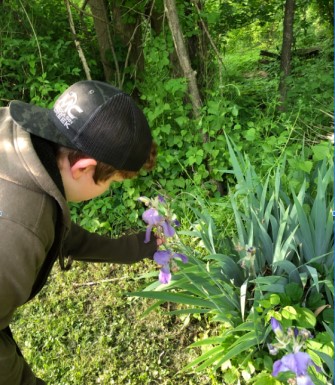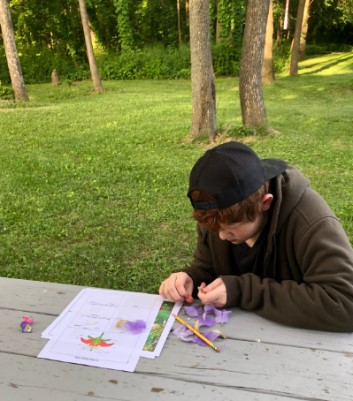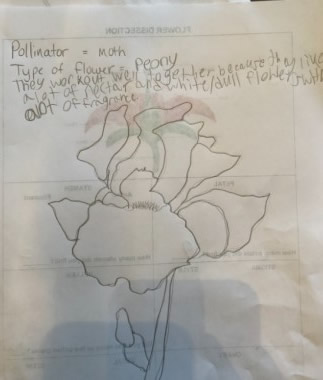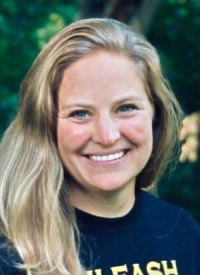Next Gen Navigator
Using Daily Dos to Connect Middle School Students to the Natural World
By Kyra Stephenson
Posted on 2020-06-25
Disclaimer: The views expressed in this blog post are those of the author(s) and do not necessarily reflect the official position of the National Science Teaching Association (NSTA).
With distance learning has come the challenge of getting students away from their one-on-one devices and engaged in their natural world. Ordinarily in my middle school classroom, I can select where my students will “do” science. As a community of learners, we create environments where students can explore scientific questions about phenomena. We use a collaborative problem-solving approach, and students engage in the science and engineering practices as they design solutions to problems they helped identify.
But with the onset of the pandemic, one crucial question remained: How were my students going to be scientists from behind their screens?
Getting students outdoors to connect with nature
 I believe students need to connect with nature to care about nature. In my classroom, I find a range of ways to bring nature into our space. I have a variety of animals, a greenhouse filled with plants, tower gardens for each class, and a New York State (NYS)–certified pollinator garden in our courtyard. Throughout the school year, students use the natural world to explore natural phenomena.
I believe students need to connect with nature to care about nature. In my classroom, I find a range of ways to bring nature into our space. I have a variety of animals, a greenhouse filled with plants, tower gardens for each class, and a New York State (NYS)–certified pollinator garden in our courtyard. Throughout the school year, students use the natural world to explore natural phenomena.
Pre-COVID-19, our class plan was to use the pollinator garden to assess biodiversity, explore form and function, and understand the unique role pollinators play in the natural world. Once distance learning was mandated, I needed to get creative to find ways for students to access the natural world. Using the Daily Do Why Are Flowers So Different? as a resource, I asked students to do a nature assessment in their backyards or neighborhoods. In the following weeks, they looked for clues about who might be inhabiting their natural spaces and what was needed to help them sustain life. As the flowers began to bloom, it was time to focus on the pollinators.
Where all students can do science
 Pollinator ecology can be studied anywhere, including in a student’s backyard. Students can obtain, evaluate, and communicate information as they observe relationships between pollinators and flowers. They can apply the lens of structure and function as they study the complementary shapes of flowers and their pollinators and make sense of ways plants and animals depend upon each other for survival.
Pollinator ecology can be studied anywhere, including in a student’s backyard. Students can obtain, evaluate, and communicate information as they observe relationships between pollinators and flowers. They can apply the lens of structure and function as they study the complementary shapes of flowers and their pollinators and make sense of ways plants and animals depend upon each other for survival.
A wonderful citizen science project is monitoring pollinator populations by recording information about flowers growing in local gardens. Using the Daily Do Why Are Flowers So Different? as a resource, I asked students to spend time observing and recording information about the flowers in their neighborhood, paying particular attention to which pollinators visit the flowers. The students completed the Flower Seeking Pollinator evidence table included in the Daily Do and were encouraged to pay particular attention to flower characteristics that would attract a specific pollinator.
Making an impact on the pollinators’ numbers
At the start of the school year, students were introduced to our NYS-Certified Pollinator Garden and had opportunities to observe pollinators on some of the late-blooming flowers. We have used the Pollinator Garden to explore a wide variety of phenomena and develop understanding of topics such as biodiversity; genetic variation; inheritance of traits; invasive species; structure and function; and the practice of analyzing and interpreting data.
 When the school closed, we no longer could visit our school garden. Students virtually helped create a pollinator garden in my yard using the The Beauty of Pollination video and the DEC Native Flowers website. We used these resources when we met virtually and discussed this question: “What would happen if you woke up and all the bees were gone?” Students continue to generate questions, share observations, and design solutions that are used to drive learning and create a need to get outside and explore the natural world. Students identified local plant and animal species using iNaturalist. Each student selected a species to research and predicted how changes to biotic and abiotic factors might impact their species.
When the school closed, we no longer could visit our school garden. Students virtually helped create a pollinator garden in my yard using the The Beauty of Pollination video and the DEC Native Flowers website. We used these resources when we met virtually and discussed this question: “What would happen if you woke up and all the bees were gone?” Students continue to generate questions, share observations, and design solutions that are used to drive learning and create a need to get outside and explore the natural world. Students identified local plant and animal species using iNaturalist. Each student selected a species to research and predicted how changes to biotic and abiotic factors might impact their species.
Educators have proven to be incredibly creative and resilient during COVID-19. Using Daily Dos and finding ways to make something like a pollinator garden relevant during distance learning are key to getting kids to participate in authentic science explorations. Daily Dos provide opportunities to do science from kitchens, backyards, and neighborhoods. Each Daily Do provides an opportunity to engage students and family members in an authentic discussion centered on a natural phenomenon. I appreciate the flexibility and scaffolding inherent in the Daily Dos that have allowed me to maintain our classroom methodology of letting students act as real scientists and engineers while building in them an appreciation for and understanding of the natural world.

Kyra Stephenson earned her BA in Integrative Studies with a concentration in Conservation Biology from George Mason University in Fairfax, Virginia, and her MS in Science Education from the Warner Graduate School of Education at the University of Rochester in Rochester, New York. Before teaching, Stephenson worked on a trumpeter swan migration project outside Buffalo, New York. During that time, she visited local schools, ultimately finding her passion in engaging students in science education.
A teacher for 16 years, she has taught Regents level and elective science courses, and currently teaches middle school science at Greece Olympia School in Rochester. She founded the S.P.A.C.E. (Stephenson Plant and Animal Care Experience) Club, in which at- risk students share responsibility for caring for various classroom plants and animals and maintain a NYS Pollinator Garden. Using grants, she purchased Tower Gardens to support life science education and provide fresh greens for students, in partnership with her school’s food pantry.
Stephenson serves as a high school class co-advisor and seventh-grade team lead. In her free time, she serves as a docent at the Seneca Park Zoo, participates in citizen science, devotes time to her favorite outdoor pastimes, and shuttles her children to their various activities. As a NYS Master Teacher, she makes connections and collaborates with other educators, and participates in rewarding professional development. Currently she is researching ways to connect students to nature education through partnerships, citizen science, and even a YouTube channel called Out The Door, which she produces with her middle school daughter.
Note: This article is featured in the June 2020 issue of Next Gen Navigator, a monthly e-newsletter from NSTA delivering information, insights, resources, and professional learning opportunities for science educators by science educators on the Next Generation Science Standards and three-dimensional instruction. Click here to sign up to receive the Navigator every month.
The mission of NSTA is to promote excellence and innovation in science teaching and learning for all.
Environmental Science NGSS Three-Dimensional Learning Middle School


